Cognitive Ease – Another Way All Of Us Are Manipulated
An Example of How the Human Mind Makes Manipulation Easy!
You May Not Have Known It, but this is Every Bit as Important as Amygdala Hijacks in Causing Scams
Primary Category: Psychology of Scams
Author:
• Tim McGuinness, Ph.D., DFin, MCPO, MAnth – Anthropologist, Scientist, Polymath, Director of the Society of Citizens Against Relationship Scams Inc.
About This Article
Scammers frequently exploit cognitive ease as a critical element in their deceptive practices, capitalizing on the human tendency to favor information that feels familiar, clear, and effortless to process.
This psychological principle reduces critical thinking, making it easier for individuals to accept and trust the information presented to them. Scammers achieve this by using tactics such as friendly and relatable language, appealing to emotions, or simplifying complex scenarios, all of which create a sense of comfort and reliability.
By designing their messages and interactions to align with the victim’s expectations and perceptions, scammers effectively lower the cognitive defenses of their targets. This makes individuals less likely to scrutinize the authenticity of the information or question the intentions behind it. As a result, victims may unknowingly comply with fraudulent requests, such as providing personal information or transferring money, believing they are engaging in a safe and legitimate transaction.
The manipulation of cognitive ease thus plays a pivotal role in the scammers’ ability to deceive and exploit their targets, highlighting the need for heightened awareness and critical assessment in all interactions.
Note: This article is intended for informational purposes and does not replace professional medical advice. If you are experiencing distress, please consult a qualified mental health professional.
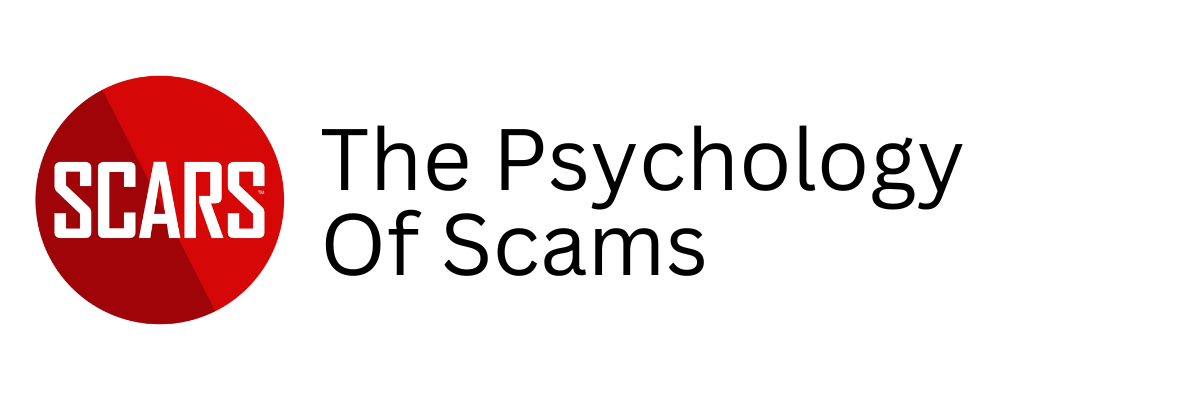
A Note About Labeling!
We often use the term ‘scam victim’ in our articles, but this is a convenience to help those searching for information in search engines like Google. It is just a convenience and has no deeper meaning. If you have come through such an experience, YOU are a Survivor! It was not your fault. You are not alone! Axios!
This is but one component, one piece of the puzzle …
Understanding how the human mind is manipulated and controlled involves recognizing that the tactics employed by deceivers are multifaceted and complex. This information is just one aspect of a broader spectrum of vulnerabilities, tendencies, and techniques that permit us to be influenced and deceived. To grasp the full extent of how our minds can be influenced, it is essential to examine all the various processes and functions of our brains and minds, methods and strategies used the criminals, and our psychological tendencies (such as cognitive biases) that enable deception. Each part contributes to a larger puzzle, revealing how our perceptions and decisions can be subtly swayed. By appreciating the diverse ways in which manipulation occurs, we gain a more comprehensive understanding of the challenges we face in avoiding deception in its many forms.
“Thufir Hawat: Now, remember, the first step in avoiding a *trap* – is knowing of its existence.” — DUNE
“If you can fully understand your own mind, you can avoid any deception!” — Tim McGuinness, Ph.D.
“The essence of bravery is being without self-deception.” — Pema Chödrön
Cognitive Ease – Yet Another Way All Of Us Are Manipulated
Understanding Cognitive Ease and Its Role in Manipulating Scam Victims
Cognitive Ease is yet another example of how easily our minds are designed to be manipulated. It seems like in every direction we turn as we examine the phenomenon of deception we find that our brains are manipulation magnets.
This is yet another aspect of our brain most people never knew existed.
What is Cognitive Ease?
Cognitive ease refers to the mental state of processing information effortlessly. When something is easy to understand or familiar, our brains perceive it as true and safe automatically. This psychological concept plays a heavy role in how we make decisions and is a key factor exploited by scammers to manipulate victims. Even though they understand none of it, they simply follow their scripts and instincts and it works because all humans are the same in this regard.
Cognitive ease occurs when our brains operate in a low-effort mode. It is the opposite of cognitive strain or cognitive overload, which happens when we face complex or unfamiliar information that requires more mental effort to process. Cognitive ease can be influenced by factors such as:
Familiarity: Repeated exposure to information makes it easier to process.
Clarity: Clear, simple, and well-organized information is easier to understand.
Repetition: Repeated messages become more believable.
Mood: Positive emotions can enhance cognitive ease.
One way to think about this is that it is like your smartphone. When you have a full battery you use your phone on full power, but when your battery is running low your phone switches to low power mode to extend your battery charge. The brain does something similar with information flowing in. If it perceives familiar information it operates in cognitive ease. When it perceives unfamiliar or complex information it can cause cognitive strain or cognitive overload.
Can you see how scammers use those to lure a victim in and then groom them? More about that below!
Cognitive Ease vs. Cognitive Strain vs. Cognitive Overload
Ironically, these extremes leave the door wide open for manipulators to take control of our minds! Cognitive ease is generally considered the opposite of cognitive overload, which is different than cognitive strain.
Here’s a detailed comparison to understand how they contrast and relate to each other:
Cognitive Ease
Definition: Cognitive ease is a mental state where processing information feels effortless and smooth. This state is characterized by a sense of comfort and familiarity.
Characteristics:
Familiarity: Information is familiar and easily recognizable.
Clarity: Messages are clear, simple, and straightforward.
Positive Emotion: Typically associated with positive emotions and a relaxed state of mind.
Quick Decision-Making: Facilitates intuitive and fast decision-making without deep analysis.
Trust and Acceptance: Information processed with cognitive ease is more likely to be trusted and accepted without much scrutiny.
Benefits:
Efficiency: Makes everyday tasks and decisions more efficient.
Comfort: This creates a sense of comfort and confidence in the information being processed.
Risks:
Susceptibility to Bias: This can lead to cognitive biases and acceptance of misinformation.
Reduced Critical Thinking: This can decrease the likelihood of critically evaluating information.
Cognitive Strain
Definition: Cognitive strain refers to the mental effort required to process information that is unfamiliar, complex, or difficult to understand. It involves a higher level of cognitive engagement and critical thinking.
Characteristics:
Effortful Processing: Requires more mental effort and concentration to understand and process information.
Critical Thinking: Involves actively analyzing, questioning, and evaluating information.
Slower Decision-Making: Decisions are made more deliberately and thoughtfully.
Discomfort and Uncertainty: Often associated with feelings of discomfort and uncertainty as the brain works harder to make sense of the information.
Benefits:
Deeper Understanding: This leads to a more thorough and accurate understanding of the information.
Reduced Susceptibility to Bias: Encourages critical thinking, which can reduce the impact of cognitive biases.
Improved Decision Quality: Typically results in more well-considered and informed decisions.
Risks:
Mental Fatigue: Prolonged cognitive strain can lead to mental fatigue and reduced cognitive performance over time.
Resistance: People may resist engaging in cognitive strain due to the discomfort and effort involved.
Cognitive Overload
Definition: Cognitive overload occurs when the amount of information or complexity exceeds an individual’s cognitive capacity to process it effectively. This state leads to difficulty in understanding and decision-making.
Characteristics:
Complexity: Information is complex, detailed, or overwhelming.
Confusion: Messages may be unclear or contain too much information to process at once.
Negative Emotion: Often associated with stress, frustration, and anxiety.
Slow Decision-Making: Requires more time and effort for decision-making, often leading to analysis paralysis.
Skepticism and Doubt: Information processed under cognitive overload is more likely to be doubted and questioned.
Benefits:
Thorough Analysis: This can lead to deeper analysis and understanding when the information is eventually processed.
Critical Evaluation: Increases the likelihood of scrutinizing information and avoiding hasty decisions.
Risks:
Decision Paralysis: This may result in difficulty making decisions due to overwhelming information.
Errors and Mistakes: Higher chances of errors due to the inability to process all the information accurately.
Comparison and Relationship
Opposites in Processing: Cognitive ease involves effortless processing and quick, intuitive decision-making, while cognitive overload involves strenuous processing and slow, analytical decision-making.
Impact on Decision-Making: Cognitive ease can lead to quick but potentially superficial decisions, influenced by familiarity and positive emotions. Cognitive overload can lead to slow, detailed, and potentially more accurate decisions but can also result in decision paralysis and frustration.
Influence on Critical Thinking: Cognitive ease tends to reduce critical thinking and increases susceptibility to biases. Cognitive overload can enhance critical thinking but also risks overwhelming the individual, leading to ineffective decision-making.
Balancing Cognitive Ease and Overload
Effective decision-making often requires balancing cognitive ease and cognitive overload. Here are some strategies:
Simplify Complex Information: Break down complex information into simpler parts to avoid overload while maintaining enough detail for informed decisions.
Use Familiar Frameworks: Present new information within familiar frameworks to leverage cognitive ease without oversimplifying.
Mindful Consumption: Be aware of the information load and take breaks to process and reflect, preventing cognitive overload.
Critical Engagement: Even in states of cognitive ease, consciously engage in critical thinking and question assumptions to avoid biases.
Key Differences Between Cognitive Strain and Overload
Nature of Cognitive Demand:
Cognitive Strain: Involves high mental effort but within the cognitive capacity of the individual. It engages critical thinking and deeper processing.
Cognitive Overload: Exceeds cognitive capacity, leading to an inability to process information effectively. It overwhelms cognitive resources.
Impact on Processing:
Cognitive Strain: Enhances processing depth and accuracy, though it is effortful and slower.
Cognitive Overload: Impairs processing, leading to confusion, errors, and decision paralysis.
Emotional Response:
Cognitive Strain: This can cause discomfort and uncertainty but is manageable with effort.
Cognitive Overload: Causes significant stress, frustration, and mental exhaustion.
Outcomes:
Cognitive Strain: Leads to better-quality decisions and reduced bias through thorough analysis.
Cognitive Overload: Results in poor decision-making and decreased cognitive performance.
Cognitive ease and cognitive strain and overload represent opposite ends of the spectrum in information processing. While cognitive ease facilitates effortless processing and quick decisions, cognitive strain, and overload involve complex processing and can lead to analysis paralysis. Balancing these states is crucial for effective decision-making, ensuring that information is processed efficiently without sacrificing depth and accuracy.
The Role of Cognitive Ease in Decision-Making
Cognitive ease plays a significant role in decision-making, influencing how individuals perceive, process, and react to information.
When we experience cognitive ease, we are more likely to accept information as true, make quick decisions, and feel confident in our choices. This state of mind often leads to intuitive, rather than analytical, thinking. While cognitive ease can be beneficial in everyday life, making routine tasks more efficient, it also makes us vulnerable to manipulation.
When individuals experience cognitive ease, they are more likely to feel confident and comfortable with the information they encounter, often leading to quicker and more intuitive decisions. This state is typically triggered by familiar, clear, and simple information, which the brain processes more effortlessly. For instance, marketing messages that are easy to read and understand are more likely to be persuasive because they create a sense of cognitive ease, making the product or service appear more appealing. This ease of processing can lead to a “halo effect,” where positive feelings toward the message extend to the product itself.
However, the influence of cognitive ease on decision-making is not without its drawbacks. While it can facilitate efficient decision-making by reducing cognitive load, it can also lead to overconfidence and a lack of critical scrutiny. When information feels easy to process, individuals may be less likely to question its accuracy or consider alternative viewpoints. This can result in biases, such as the availability heuristic, where decisions are based on information that is most readily available or familiar, rather than the most accurate or relevant. Additionally, cognitive ease can cause individuals to rely on mental shortcuts or heuristics, potentially leading to superficial or suboptimal decisions. Understanding the role of cognitive ease is crucial for recognizing its impact on decision-making processes and for developing strategies to mitigate its potential negative effects.
Daily Exposure to Cognitive Ease Manipulation by Marketers
Marketers use cognitive ease to influence buying decisions by making their messages, products, and brands easy to understand, familiar, and appealing. They employ various strategies to create a mental state where consumers feel comfortable, trust the information, and are more likely to make a purchase. Here are some key tactics marketers use:
Repetition and Consistency
Brand Recognition: Repeated exposure to brand logos, slogans, and advertisements increases familiarity. When consumers repeatedly see the same messages, they begin to recognize and trust the brand.
Consistent Messaging: Consistent use of themes, colors, and messages across all marketing channels helps reinforce the brand identity and makes it easier for consumers to process and remember.
Clear and Simple Communication
Simple Language: Using straightforward and easy-to-understand language in marketing materials reduces cognitive strain, making it easier for consumers to grasp the message quickly.
Visual Aids: Clear and appealing visuals, such as infographics, charts, and images, help convey information efficiently and make it more memorable.
Familiarity
Familiar Themes and Stories: Marketing campaigns often use familiar themes, stories, or scenarios that resonate with the target audience. This familiarity makes the content more relatable and easier to process.
Testimonials and Reviews: Featuring testimonials and reviews from real customers or influencers creates a sense of familiarity and trust. Seeing others have positive experiences reduces perceived risk.
Positive Associations
Positive Emotions: Ads that evoke positive emotions, such as happiness, nostalgia, or excitement, create a sense of cognitive ease. Positive feelings make consumers more receptive to the message and more likely to make a purchase.
Aesthetics and Design: Attractive and user-friendly designs in packaging, websites, and ads enhance the overall experience and make it more enjoyable, reducing cognitive strain.
Social Proof and Authority
Endorsements: Featuring endorsements from celebrities, experts, or trusted authorities leverages the familiarity and credibility of these figures, making the product seem more reliable.
Social Proof: Displaying the popularity of a product through ratings, reviews, and the number of users or buyers creates a bandwagon effect, encouraging others to follow suit.
Ease of Use and Accessibility
User-Friendly Interfaces: Websites and apps designed for easy navigation and quick access to information reduce cognitive load. Simplified checkout processes and intuitive designs make the buying process smooth and hassle-free.
Convenience: Offering multiple payment options, easy returns, and fast delivery services reduces perceived effort and increases the likelihood of purchase.
Priming and Anchoring
Priming: Exposure to certain words, images, or concepts can influence subsequent thoughts and behaviors. Marketers prime consumers by subtly introducing ideas that make their products more appealing.
Anchoring: Initial exposure to a high price point or value sets a reference point (anchor), making subsequent offers seem more attractive. For example, showing a higher-priced product first makes the next product appear more affordable.
Scarcity and Urgency
Limited-Time Offers: Creating a sense of urgency with limited-time discounts or promotions encourages quick decision-making, leveraging cognitive ease by reducing the time for critical evaluation.
Scarcity: Highlighting limited availability or stock levels makes products seem more desirable and prompts faster purchases.
Examples of Cognitive Ease in Marketing
Apple: Apple’s marketing emphasizes sleek, simple designs and intuitive functionality, making its products appear easy to use. Their consistent branding and positive emotional appeals create strong cognitive ease.
Coca-Cola: Coca-Cola’s use of familiar themes, such as happiness and nostalgia, along with consistent branding and simple, clear messages, makes their marketing highly effective.
Amazon: Amazon’s website design prioritizes ease of use, with features like one-click purchasing, personalized recommendations, and customer reviews, making the shopping experience smooth and effortless.
Marketers skillfully use cognitive ease to influence (manipulate) buying decisions by creating a sense of familiarity, clarity, and positive emotion around their products. By making information easy to process and reducing cognitive strain, they increase the likelihood that consumers will trust their messages, feel good about their choices, and ultimately make a purchase. Understanding these tactics can help consumers make more informed decisions and recognize when they are being influenced by cognitive ease. Have you noticed that politicians do exactly the same thing?
Connection Between Cognitive Biases and Cognitive Ease
Cognitive ease and cognitive biases are closely related concepts in psychology, often influencing each other in ways that shape our judgments, decisions, and perceptions. Here’s an overview of their correlation, how they are related, and how one can lead to the other:
Understanding Cognitive Ease
Cognitive ease is the state in which our brain processes information with little effort. When information is familiar, clear, and simple, we experience cognitive ease, leading to feelings of comfort and trust. This mental state influences our thinking and decision-making processes, often making us more receptive to the information presented.
Understanding Cognitive Biases
Cognitive biases are systematic patterns of deviation from norm or rationality in judgment. These biases occur because of the mental shortcuts (heuristics) our brain uses to process information quickly and efficiently. While these shortcuts can be useful, they can also lead to errors in thinking and decision-making.
Correlation and Relationship
Cognitive Ease Facilitates Cognitive Biases:
Confirmation Bias: When we experience cognitive ease, we are more likely to accept information that aligns with our existing beliefs and ignore information that contradicts them. The familiarity and clarity of information reinforce our preconceptions, leading to confirmation bias.
Anchoring Effect: Cognitive ease can make us more susceptible to anchoring, where we rely heavily on the first piece of information we receive (the anchor) when making decisions. The ease of processing the initial information makes it more influential in our subsequent judgments.
Availability Heuristic: Information that is easily recalled from memory (due to frequent exposure or recent events) creates cognitive ease. This ease makes us more likely to overestimate the likelihood of events based on their availability in our memory, leading to availability bias.
Cognitive Biases Reinforce Cognitive Ease:
Mere Exposure Effect: The mere exposure effect, a type of cognitive bias, suggests that repeated exposure to a stimulus increases our preference for it. This repeated exposure creates cognitive ease, as familiar information is easier to process.
Illusory Truth Effect: Repeated statements are more likely to be perceived as true, even if they are false. This bias occurs because familiarity with the statement creates cognitive ease, leading us to accept it as accurate without critical evaluation.
How One Leads to the Other
Cognitive Ease Leading to Bias: When we encounter information that is easy to process, we are less likely to scrutinize it critically. This ease can lead to various cognitive biases, such as assuming the information is true (illusory truth effect) or preferring familiar options (status quo bias).
Cognitive Bias Leading to Ease: Cognitive biases can create conditions that foster cognitive ease. For instance, the confirmation bias leads us to seek out information that supports our beliefs, making it easier to process and reinforcing cognitive ease.
Practical Implications
Marketing and Advertising: Marketers exploit cognitive ease by making their messages familiar and straightforward. This ease triggers biases like the mere exposure effect, increasing the likelihood of consumer acceptance and preference.
Decision Making: Understanding the interplay between cognitive ease and biases can improve decision-making processes. Recognizing when cognitive ease is influencing our thoughts can help us take a more critical and analytical approach, reducing the impact of biases.
Risk of Manipulation: Awareness of how cognitive ease can lead to biases is crucial in contexts like political campaigns or misinformation. Recognizing these effects can help individuals better evaluate the information they receive and make more informed choices.
Cognitive ease and cognitive biases are intertwined, with each influencing the other in significant ways. Cognitive ease facilitates various cognitive biases by making information feel more trustworthy and acceptable, while cognitive biases can create environments where cognitive ease thrives. Understanding this relationship helps us recognize how our judgments and decisions can be swayed and encourages us to adopt more critical thinking practices.
How Scammers Exploit Cognitive Ease
Scammers leverage cognitive ease to deceive their victims by making fraudulent messages appear trustworthy and legitimate.
Examples
Here are some tactics they use:
Phishing Emails: Scammers craft emails that mimic those from reputable organizations. These emails use familiar logos, language, and formatting to create a sense of legitimacy. Victims, experiencing cognitive ease, are more likely to click on malicious links or provide personal information.
Social Proof and Authority: Scammers often use testimonials, fake reviews, or impersonate authority figures to exploit our trust in recognized entities. Seeing familiar faces or reputable endorsements creates cognitive ease, making us more likely to believe the scam.
Repetition: Repeating messages through various channels (email, social media, phone calls) increases familiarity. As the message becomes familiar, our brains find it easier to process, and we are more likely to accept it as true.
Simple Language: Scammers use clear and straightforward language to avoid cognitive strain. When instructions or requests are easy to understand, victims are less likely to scrutinize the message and more likely to comply. Ironically, they also do the opposite, because complex language will more often be overlooked or ignored.
Creating Urgency: Scammers create a false sense of urgency, prompting quick decisions without thorough analysis. In a state of cognitive ease, victims are more prone to act on impulse.
Real-World Examples
Tech Support Scams: Scammers pose as tech support from well-known companies, using familiar logos and technical jargon. They create a sense of urgency by claiming the victim’s computer is at risk, prompting immediate action.
IRS/Government Impersonation Scams: Fraudsters impersonate IRS officials, using official-looking emails and phone calls. They use familiar terminology and threaten legal action, making victims feel pressured to comply quickly.
Lottery Scams: Victims receive messages claiming they’ve won a prize. The message often includes familiar logos from real lotteries or real companies, creating cognitive ease and prompting victims to provide personal information or send money to claim their prize.
The Role of Cognitive Ease at the Beginning of Scams
Scammers exploit cognitive ease to reduce critical thinking to lure and groom victims
Cognitive ease plays a crucial role in the mechanics of scamming by making fraudulent schemes appear more credible and less suspicious, thereby reducing the victim’s critical thinking and making them more susceptible to manipulation. Scammers often design their tactics to exploit cognitive ease, creating an environment where the information or interactions seem familiar, straightforward, and effortless to process. This manipulation of cognitive ease reduces the victim’s inclination to question or critically evaluate the situation.
For instance, in romance scams, perpetrators frequently establish a sense of familiarity and emotional comfort by crafting messages that resonate with the victim’s desires and emotions. The scammers often use personal details, flattery, and seemingly genuine interactions to create a feeling of closeness and trust. This emotional connection makes it easier for the scammer to manipulate the victim, as the information appears genuine and straightforward, promoting cognitive ease. The victim’s cognitive processes become less rigorous, making them more likely to accept the scammer’s requests for money or personal information without thorough scrutiny.
Similarly, in investment scams, fraudsters use persuasive, simplified language and present information in a way that seems easy to understand and promising. They may highlight the apparent ease and potential rewards of the investment while downplaying or obscuring any risks. This approach leverages cognitive ease by presenting the scam as a low-effort, high-reward opportunity. As a result, victims may be less inclined to perform due diligence or critically assess the legitimacy of the investment, leading them to make decisions based on the deceptive ease created by the scammer.
Overall, by reducing cognitive effort and fostering a sense of ease, scammers effectively lower the barriers to critical thinking and skepticism. This manipulation allows them to groom and lure victims more successfully, making it essential for individuals to remain vigilant and question information that feels too effortless to process or that taps into strong emotional responses.
Relationship Scams
Romance Scams & Cryptocurrency Investment Scams also involve cognitive ease in trapping their victims.
Cognitive ease plays a significant role in both romance scams and cryptocurrency investment scams. Scammers in these contexts use similar tactics to those seen in other types of fraud, leveraging the mental shortcuts that people naturally rely on to make their deceptive schemes more convincing and effective.
Romance Scams
In romance scams, scammers create fake online profiles to establish romantic relationships with their victims. They exploit cognitive ease through:
Familiarity and Trust: Scammers often use photos and information that resemble real people, creating a sense of familiarity. They might even mimic the victim’s interests and preferences to build rapport quickly.
Repetition and Consistency: Regular communication through messages, calls, and video chats fosters a sense of familiarity and trust. The repeated interactions make the relationship seem genuine, reducing the victim’s skepticism.
Emotional Engagement: Positive interactions and expressions of love and affection create a sense of cognitive ease. When people feel emotionally connected and happy, they are less likely to question the authenticity of the relationship.
Simple and Clear Requests: Once trust is established, scammers make clear and seemingly reasonable requests for money, often under the guise of an emergency or a business opportunity. The straightforward nature of these requests makes victims less likely to scrutinize them.
Cryptocurrency Investment Scams
Cryptocurrency investment scams exploit cognitive ease by presenting investment opportunities in a way that appears legitimate and promising. Scammers use several tactics:
Familiar Terminology: Using familiar financial and technological terms makes the investment opportunity seem credible. They may reference well-known cryptocurrencies like Bitcoin or Ethereum to create a sense of legitimacy.
Testimonials and Endorsements: Scammers often use fake testimonials and endorsements from supposed investors or celebrities. These familiar faces and success stories create cognitive ease, making the investment seem trustworthy.
Clear and Simple Promises: Promises of high returns on investment, presented in clear and straightforward language, reduce cognitive strain. The simplicity of the promise makes it more believable and appealing.
Professional-Looking Websites: Well-designed websites with familiar layouts, logos, and content create a sense of legitimacy. The ease of navigating these sites reduces skepticism and increases trust.
After the Scam the Amygdala Affects Cognition
The amygdala, that small almond-shaped structure in the brain that is famous for its hijacks plays the key role in processing emotions, particularly those related to fear, threat, and reward. Its function can significantly impact cognitive ease, cognitive strain, and cognitive overload in various ways.
Here’s how the amygdala influences each of these cognitive states:
Impact on Cognitive Ease
Cognitive ease refers to the state of effortless thinking, where information processing feels smooth and comfortable. The amygdala influences cognitive ease in several ways:
Emotional Comfort: The amygdala’s role in processing emotions can enhance cognitive ease by making certain information or experiences feel familiar and safe. For example, positive emotions like joy and satisfaction, often processed by the amygdala, can contribute to cognitive ease by creating a pleasant and reassuring environment.
Familiarity and Trust: The amygdala is involved in evaluating emotional responses to familiar stimuli. When encountering familiar or repeated information, the amygdala may signal safety and reliability, promoting cognitive ease and making it more likely for individuals to accept the information without critical scrutiny.
Reduced Threat Response: In a state of cognitive ease, the amygdala’s response to potential threats is minimized. This reduction in perceived threat can lead to lower anxiety levels, facilitating smoother and more relaxed cognitive processing.
Impact on Cognitive Strain
Cognitive strain involves the effortful processing of complex or unfamiliar information, requiring more critical thinking and mental energy. The amygdala’s impact on cognitive strain includes:
Heightened Emotional Response: When faced with unfamiliar or challenging information, the amygdala may trigger emotional responses such as anxiety, fear, or uncertainty. These emotions can increase cognitive strain as the individual works harder to understand and process the information.
Increased Vigilance: The amygdala’s role in detecting potential threats can lead to increased vigilance and attentiveness when processing new or complex information. This heightened state can contribute to cognitive strain, as the brain allocates more resources to thoroughly analyze the situation.
Stress and Cognitive Load: Emotional responses triggered by the amygdala, such as stress, can amplify cognitive strain. The presence of stress hormones like cortisol can make it more challenging to focus and think critically, further increasing the effort required to process information.
Impact on Cognitive Overload
Cognitive overload occurs when the brain is overwhelmed with too much information or too complex data, exceeding its capacity to process effectively. The amygdala influences cognitive overload in the following ways:
Overwhelming Emotional Responses: In situations of cognitive overload, the amygdala may become overactive, heightening feelings of stress, anxiety, and confusion. These strong emotional responses can exacerbate the sense of being overwhelmed, making it harder to process information and leading to decision paralysis.
Fight-or-Flight Response: The amygdala’s activation can trigger the fight-or-flight response, a physiological reaction to perceived threats. In the context of cognitive overload, this response can lead to either a hasty reaction (fight) or avoidance and withdrawal from the situation (flight), both of which hinder effective information processing.
Impaired Memory and Focus: High levels of stress and emotional arousal linked to amygdala activation can impair working memory and focus. This impairment further compounds the effects of cognitive overload, making it difficult to retain and organize information.
Protecting Yourself from Manipulation & Fraud
To protect yourself from these scams, it’s important to recognize when cognitive ease might be at play and take steps to verify the authenticity of the relationship or investment opportunity.
Quick (Cognitive Easy) Avoidance Tips
Here are some easy tips:
Be Skeptical of Familiarity: Just because a message looks familiar doesn’t mean it’s legitimate. Always verify the source independently.
Challenge Simplicity and Clarity: Be skeptical of requests for money or investment opportunities that seem too clear-cut or straightforward. Scammers often simplify their pitches to avoid scrutiny. If a message seems too clear and straightforward, especially if it involves requests for personal information or urgent action, take a step back and analyze it critically.
Seek Confirmation: Verify any claims or requests by contacting relevant authorities, financial institutions, or trusted individuals. Don’t rely solely on the information provided by the scammer. When in doubt, confirm the legitimacy of a message by contacting the organization directly using official contact information.
Educate Yourself: Stay informed about common scams and tactics used by fraudsters. Awareness is a powerful tool in protecting yourself.
Verify Identities: In romance scams, conduct reverse image searches on profile pictures and be cautious about sharing personal information. In investment scams, research the company or individual offering the opportunity and look for independent reviews and feedback.
By understanding how cognitive ease works and being vigilant, you can protect yourself from falling victim to romance scams, cryptocurrency investment scams, and other types of fraud.
Really Defending Against Cognitive Ease (Cognitive Strain Version)
Defending against cognitive ease involves being mindful of its effects and implementing strategies to ensure thorough and critical thinking.
Here are (cognitive strain) practical ways to effectively avoid cognitive ease and make more informed decisions:
Cultivate Awareness
Educate Yourself: Learn about cognitive ease and related cognitive biases. Understanding how and why these mental shortcuts occur is the first step in recognizing when they might be influencing your decisions.
Reflect on Decisions: Regularly reflect on your decision-making process. Ask yourself if you are choosing the easier, more familiar option without considering all the facts.
Seek Diverse Perspectives
Consult Multiple Sources: Avoid relying on a single source of information. Check multiple reputable sources to get a well-rounded view.
Engage in Debates: Discuss your views with others, especially those who have different perspectives. This can help you see potential biases and weaknesses in your thinking.
Practice Critical Thinking
Question Assumptions: Regularly challenge your assumptions. Ask yourself why you believe something and whether there is evidence to support it.
Analyze Motives: Consider the motives behind the information you receive. Think about who benefits from you believing or acting on this information.
Slow Down Your Thinking
Take Your Time: Avoid making hasty decisions, especially for important matters. Take the time to gather all relevant information and consider it carefully.
Break Down Information: Divide complex information into smaller, more manageable parts. Analyzing each part separately can help reduce cognitive ease and increase understanding.
Verify Information
Cross-Check Facts: Verify information from multiple credible sources before accepting it as true. Look for evidence that supports or contradicts the claims being made.
Contact Reliable Authorities: If in doubt, consult reliable and authoritative sources or experts in the field.
Use Structured Decision-Making Tools
Checklists: Use checklists to ensure you consider all relevant factors in a decision. This can help prevent overlooking important details due to cognitive ease.
Pros and Cons Lists: Create lists of pros and cons for each option you are considering. This forces you to think critically about each choice.
Create a Feedback Loop
Seek Feedback: Ask for feedback from trusted individuals on your decisions and thought processes. They may identify biases or oversights that you missed.
Reflect and Adjust: Regularly reflect on past decisions and their outcomes. Use this reflection to adjust your decision-making process and avoid repeating mistakes.
Embrace Discomfort
Challenge Comfort Zones: Deliberately expose yourself to new and challenging ideas. This can help you become more comfortable with cognitive strain and reduce reliance on cognitive ease.
Practice Skepticism: Maintain a healthy level of skepticism, especially towards information that seems too easy or convenient to accept.
Stay Informed
Continuous Learning: Stay informed about new developments and research in critical thinking, cognitive biases, and decision-making strategies.
Regular Updates: Regularly update your knowledge and skills to keep them sharp and relevant.
Mindful Media Consumption
Limit Exposure to Repetition: Be cautious of repeated messages from media and advertisements. Recognize that repetition can create familiarity and cognitive ease, leading to acceptance without critical evaluation.
Diversify Media Sources: Consume media from a variety of sources and perspectives to avoid echo chambers that reinforce cognitive ease.
Avoiding cognitive ease requires a proactive and mindful approach to information processing and decision-making. By cultivating awareness, seeking diverse perspectives, practicing critical thinking, and using structured tools, you can defend against the influence of cognitive ease and make more informed, rational decisions. Embracing discomfort and staying continuously informed will further strengthen your ability to recognize and counteract cognitive ease in various aspects of life.
Recognizing Our Cognitive States & Optimizing Our Thinking
Managing cognitive ease, cognitive strain, and cognitive overload involves developing self-awareness and implementing strategies to optimize cognitive processing. Here are practical steps and techniques to help you recognize and manage these cognitive states:
Recognizing Cognitive States
Cognitive Ease:
Indicators: Information feels familiar, easy to process, and requires minimal effort. You might feel relaxed and confident in your understanding.
Questions to Ask Yourself:
Am I quickly agreeing with this information because it feels familiar?
Have I critically evaluated this information, or am I accepting it at face value?
Cognitive Strain:
Indicators: You experience effortful processing, slower decision-making, and a need for deep concentration. There may be feelings of discomfort or uncertainty.
Questions to Ask Yourself:
Am I finding this information difficult to understand or analyze?
Am I feeling stressed or anxious about getting to the right answer?
Cognitive Overload:
Indicators: Overwhelming amount of information or complexity, leading to confusion, frustration, and difficulty in processing or decision-making.
Questions to Ask Yourself:
Do I feel overwhelmed or unable to process all the information?
Am I struggling to focus or remember key details?
Managing Each Cognitive State
Managing Cognitive Ease:
Critical Thinking: Deliberately engage in critical thinking. Question assumptions, seek out alternative perspectives, and verify information with credible sources.
Awareness of Biases: Be aware of cognitive biases such as confirmation bias and familiarity bias, which may be more prominent in a state of cognitive ease.
Diverse Information: Actively seek out diverse viewpoints and information sources to avoid the pitfalls of cognitive ease.
Managing Cognitive Strain:
Break Down Information: Simplify complex information into smaller, manageable chunks. Use summaries, bullet points, and visuals to aid understanding.
Take Breaks: Regularly take short breaks to reduce mental fatigue and maintain focus.
Use Structured Approaches: Implement structured decision-making tools such as pros and cons lists, decision trees, or flowcharts to organize thoughts and make the process more manageable.
Managing Cognitive Overload:
Prioritize Information: Focus on the most relevant information and filter out unnecessary details. Identify key priorities and tackle them first.
Limit Information Intake: Set boundaries for the amount of information you consume at one time. Avoid multitasking with complex tasks.
Organize Information: Use tools like outlines, mind maps, or categorization to organize information logically and make it easier to process.
Stress Management: Practice stress-relief techniques such as mindfulness, meditation, or physical exercise to manage the emotional impact of cognitive overload.
Developing Self-Awareness
Regular Self-Reflection: Set aside time to reflect on your cognitive processes and decision-making experiences. Consider what state you were in and how it influenced your outcomes.
Mindfulness and Awareness Training: Engage in mindfulness practices to become more aware of your thoughts and feelings. This can help you recognize when you are experiencing cognitive ease, strain, or overload.
Feedback Mechanisms: Seek feedback from others on your decision-making processes and outcomes. This can provide external insights into how your cognitive states may be affecting your actions.
Continuous Learning: Stay informed about cognitive psychology and decision-making strategies. Understanding the theory behind these concepts can enhance your ability to recognize and manage them in practice.
Practical Exercises
Journaling: Keep a journal of significant decisions and thought processes. Note your mental state, any challenges faced, and the strategies used to manage them.
Critical Thinking Exercises: Engage in exercises that challenge your thinking, such as puzzles, debates, or reading materials that present counterarguments to your beliefs.
Mindfulness Practices: Incorporate mindfulness practices like meditation or deep breathing exercises into your daily routine to improve emotional regulation and awareness.
By becoming aware of the cognitive state you are in, you can apply appropriate strategies to manage cognitive ease, cognitive strain, and cognitive overload. This awareness, coupled with practical techniques for managing each state, can enhance your cognitive resilience, improve decision-making, and help you navigate complex information more effectively.
Summary
Cognitive ease plays a significant role in how we process information and make decisions. Scammers exploit this mental shortcut to manipulate victims by creating messages that appear familiar, clear, and urgent. By understanding cognitive ease and being vigilant, you can protect yourself from falling prey to these deceptive tactics. Always take the time to verify information and think critically, especially when something seems too good to be true or requires immediate action.
Please Rate This Article
Please Leave Us Your Comment Below
Also, tell us of any topics we might have missed.
-/ 30 /-
What do you think about this?
Please share your thoughts in a comment above!
-/ 30 /-
What do you think about this?
Please share your thoughts in a comment above!
SCARS LINKS: AgainstScams.org RomanceScamsNOW.com ContraEstafas.org ScammerPhotos.com Anyscam.com ScamsNOW.com
reporting.AgainstScams.org support.AgainstScams.org membership.AgainstScams.org donate.AgainstScams.org shop.AgainstScams.org
youtube.AgainstScams.org linkedin.AgainstScams.org facebook.AgainstScams.org
ARTICLE RATING
TABLE OF CONTENTS
CATEGORIES
U.S. & Canada Suicide Lifeline 988
![NavyLogo@4x-81[1] Cognitive Ease - Another Way All Of Us Are Manipulated - 2024](https://scamsnow.com/wp-content/uploads/2025/04/NavyLogo@4x-811.png)
ARTICLE META
Important Information for New Scam Victims
- Please visit www.ScamVictimsSupport.org – a SCARS Website for New Scam Victims & Sextortion Victims.
- SCARS Institute now offers its free, safe, and private Scam Survivor’s Support Community at www.SCARScommunity.org – this is not on a social media platform, it is our own safe & secure platform created by the SCARS Institute especially for scam victims & survivors.
- SCARS Institute now offers a free recovery learning program at www.SCARSeducation.org.
- Please visit www.ScamPsychology.org – to more fully understand the psychological concepts involved in scams and scam victim recovery.
If you are looking for local trauma counselors, please visit counseling.AgainstScams.org
If you need to speak with someone now, you can dial 988 or find phone numbers for crisis hotlines all around the world here: www.opencounseling.com/suicide-hotlines
Statement About Victim Blaming
Some of our articles discuss various aspects of victims. This is both about better understanding victims (the science of victimology) and their behaviors and psychology. This helps us to educate victims/survivors about why these crimes happened and not to blame themselves, better develop recovery programs, and help victims avoid scams in the future. At times, this may sound like blaming the victim, but it does not blame scam victims; we are simply explaining the hows and whys of the experience victims have.
These articles, about the Psychology of Scams or Victim Psychology – meaning that all humans have psychological or cognitive characteristics in common that can either be exploited or work against us – help us all to understand the unique challenges victims face before, during, and after scams, fraud, or cybercrimes. These sometimes talk about some of the vulnerabilities the scammers exploit. Victims rarely have control of them or are even aware of them, until something like a scam happens, and then they can learn how their mind works and how to overcome these mechanisms.
Articles like these help victims and others understand these processes and how to help prevent them from being exploited again or to help them recover more easily by understanding their post-scam behaviors. Learn more about the Psychology of Scams at www.ScamPsychology.org
SCARS INSTITUTE RESOURCES:
If You Have Been Victimized By A Scam Or Cybercrime
♦ If you are a victim of scams, go to www.ScamVictimsSupport.org for real knowledge and help
♦ SCARS Institute now offers its free, safe, and private Scam Survivor’s Support Community at www.SCARScommunity.org/register – this is not on a social media platform, it is our own safe & secure platform created by the SCARS Institute especially for scam victims & survivors.
♦ Enroll in SCARS Scam Survivor’s School now at www.SCARSeducation.org
♦ To report criminals, visit https://reporting.AgainstScams.org – we will NEVER give your data to money recovery companies like some do!
♦ Follow us and find our podcasts, webinars, and helpful videos on YouTube: https://www.youtube.com/@RomancescamsNowcom
♦ Learn about the Psychology of Scams at www.ScamPsychology.org
♦ Dig deeper into the reality of scams, fraud, and cybercrime at www.ScamsNOW.com and www.RomanceScamsNOW.com
♦ Scam Survivor’s Stories: www.ScamSurvivorStories.org
♦ For Scam Victim Advocates visit www.ScamVictimsAdvocates.org
♦ See more scammer photos on www.ScammerPhotos.com
You can also find the SCARS Institute’s knowledge and information on Facebook, Instagram, X, LinkedIn, and TruthSocial
Psychology Disclaimer:
All articles about psychology and the human brain on this website are for information & education only
The information provided in this and other SCARS articles are intended for educational and self-help purposes only and should not be construed as a substitute for professional therapy or counseling.
Note about Mindfulness: Mindfulness practices have the potential to create psychological distress for some individuals. Please consult a mental health professional or experienced meditation instructor for guidance should you encounter difficulties.
While any self-help techniques outlined herein may be beneficial for scam victims seeking to recover from their experience and move towards recovery, it is important to consult with a qualified mental health professional before initiating any course of action. Each individual’s experience and needs are unique, and what works for one person may not be suitable for another.
Additionally, any approach may not be appropriate for individuals with certain pre-existing mental health conditions or trauma histories. It is advisable to seek guidance from a licensed therapist or counselor who can provide personalized support, guidance, and treatment tailored to your specific needs.
If you are experiencing significant distress or emotional difficulties related to a scam or other traumatic event, please consult your doctor or mental health provider for appropriate care and support.
Also read our SCARS Institute Statement about Professional Care for Scam Victims – click here
If you are in crisis, feeling desperate, or in despair, please call 988 or your local crisis hotline.
More ScamsNOW.com Articles
A Question of Trust
At the SCARS Institute, we invite you to do your own research on the topics we speak about and publish. Our team investigates the subject being discussed, especially when it comes to understanding the scam victims-survivors’ experience. You can do Google searches, but in many cases, you will have to wade through scientific papers and studies. However, remember that biases and perspectives matter and influence the outcome. Regardless, we encourage you to explore these topics as thoroughly as you can for your own awareness.





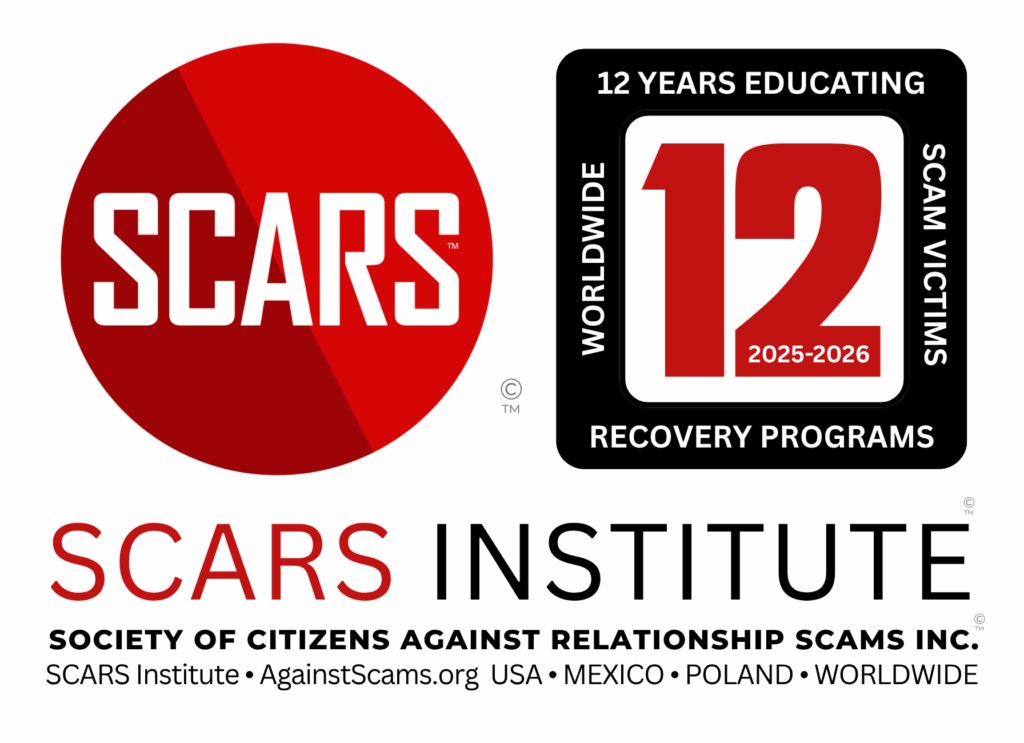




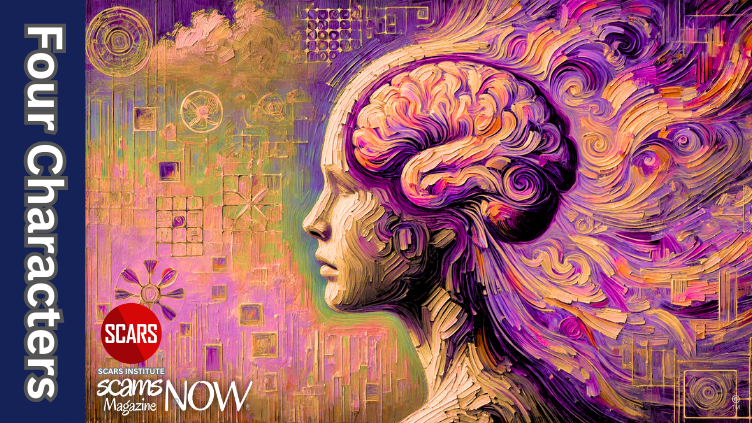





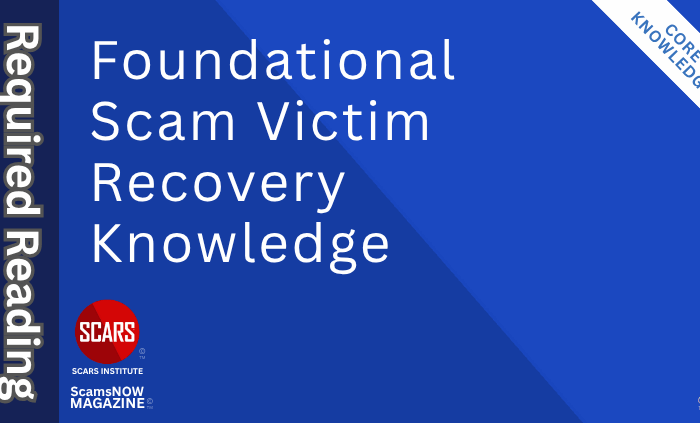


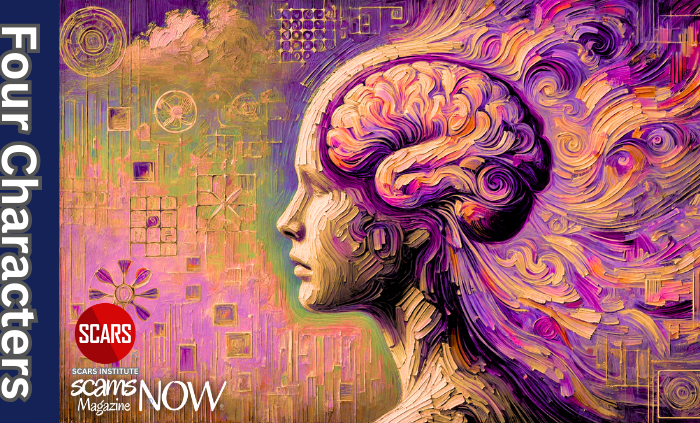




![scars-institute[1] Cognitive Ease - Another Way All Of Us Are Manipulated - 2024](https://scamsnow.com/wp-content/uploads/2025/04/scars-institute1.png)
![niprc1.png1_-150×1501-1[1] Cognitive Ease - Another Way All Of Us Are Manipulated - 2024](https://scamsnow.com/wp-content/uploads/2025/04/niprc1.png1_-150x1501-11.webp)
